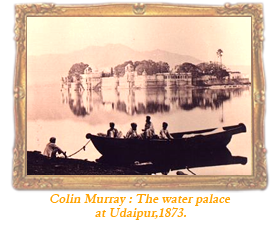|
Untitled Document
|
 |
 Photography came to India in 1840 and various British photographers traveled to India to record the historical monuments and the varied landscape of the country. In 1847 William Armstrong Fallon surveyed in Temples in the Ajanta and Ellora caves and published a book. Photography came to India in 1840 and various British photographers traveled to India to record the historical monuments and the varied landscape of the country. In 1847 William Armstrong Fallon surveyed in Temples in the Ajanta and Ellora caves and published a book.
Thomas Biggs, Bombay Artillery was appointed architectural photographer in 1855, made 100 negatives of Bijapur, Aihole, Badami and other sites. In Madras Linnaeus Tripe was appointed official photographer. Tripe photographed the temple architecture of Srirangam, Tiruchirapalli, Tanjavur, Madurai and other places. In 1870 Archeological Survey of India appointed Major General Alexander Cunningham and thousands of negatives and prints were made of various heritage sites.
 William Johnson and William Henderson photographed various people and published 2 volumes called the Oriental Races and Tribes. In 1868 Captain Meadowes Taylor published the People of India, 8 volumes that contained 500 original photographs. The first photographic societies of India were found in 1854 in Bombay and 1857 in Bengal and Madras. The photographic societies greatly contributed to familiarize the theory and practice of photography. In 1856 Dr. Alexander Hunter of the Madras School of Industrial Art did useful work. William Johnson and William Henderson photographed various people and published 2 volumes called the Oriental Races and Tribes. In 1868 Captain Meadowes Taylor published the People of India, 8 volumes that contained 500 original photographs. The first photographic societies of India were found in 1854 in Bombay and 1857 in Bengal and Madras. The photographic societies greatly contributed to familiarize the theory and practice of photography. In 1856 Dr. Alexander Hunter of the Madras School of Industrial Art did useful work.
Some of the rulers like Raja of Chamba, Ramsingh the Maharaja of Jaipur, Maharaja of Benaras and other princess also took up to photography.
 Lala Deen Dayal photographed the scene on a wider scale than any European firms did since he moved with ease between Indian and English worlds. Lala Deen Dayal photographed the scene on a wider scale than any European firms did since he moved with ease between Indian and English worlds.
Subsequently commercial photographers like Samuel Bourne and Shepherd, Johnston and Hoffman, Burke, Cache made some of their finest works of the historical sites and also for the archeological survey. In spite of all the foreign photographers Lala Deen Dayal, by his mastery of the camera was able to surpass them all. |
|
Untitled Document
| © 2010 Raja Deen Dayal. All Rights Reserved. |
|
|
|
|